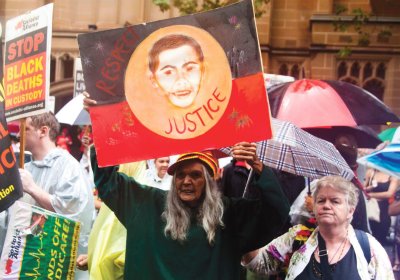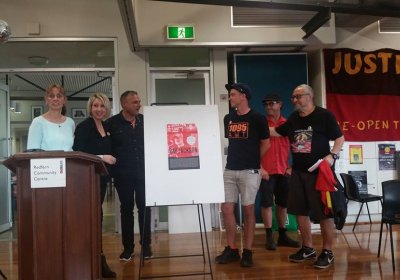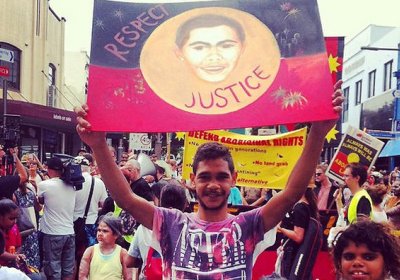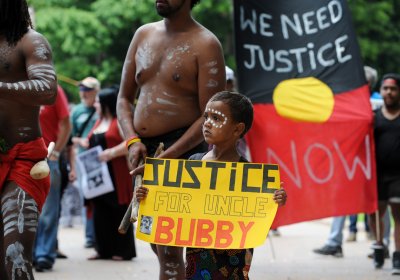On February 14, the family and supporters of TJ Hickey will meet at the park they have named after the young Kamilaroi man, 15 years after he was murdered by the NSW police.
Raul Bassi
In recent years there has been an important revival of Invasion Day marches on January 26. Together with the issues of Aboriginal sovereignty and ongoing injustices against First Nations people, Raul Bassi writes that a focus of this year’s protest will be Black deaths in custody.
Almost 100 people gathered at the Redfern Community Centre on April 21 for an exhibition and memorial to commemorate the third anniversary of the passing of Ray Jackson.
The memorial, which was organised by Jackson’s family, with the support of friends, comrades and the Indigenous Social Justice Association (ISJA) started with a very emotive smoking ceremony.
For almost 14 years we have repeated the same sad story of the death of TJ Hickey.
The young Kamilaroi man was happily riding his bike in Waterloo on February 14, 2004, totally unaware of the tragedy that was to come. A police car driven by then Constable Hollingsworth, started to pursue him. On the corner of Phillip and George streets, a police vehicle hit the bike and TJ was catapulted and impaled on the spiked iron fence.
As expected, once Brazil’s October regional elections were over, the Michel Temer government launched a large-scale offensive against workers, youth and the people in general.
At the heart of this offensive is Constitutional Amendment Proposal (PEC) 241, which essentially imposes a freeze on government expenditure for the next 20 years.
The killing of two African American men in Minnesota and Louisiana in early July created an uproar across the US and around the world. In Australia there was lots of social media commentary and letters to the press about US racism.
The land between the Clarence and Nambucca Rivers on New South Wales’ mid-north coast is Gumbaynggirr country. The Blood Rock massacre took place there in the 1880s, when police surrounded local Aboriginal people and shot them in the waters around Red Rock. A plaque reads: “Gumbaynggirr descendants, especially women, still avoid this headland. The significance of this place, and the rebirthing of our culture, will never been forgotten”.
 TJ Hickey was a young Aboriginal man, just 17 years old. On February 14, 2004, TJ died as a consequence of a Redfern police pursuit.
TJ Hickey was a young Aboriginal man, just 17 years old. On February 14, 2004, TJ died as a consequence of a Redfern police pursuit.
- Page 1
- Next page










